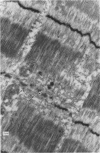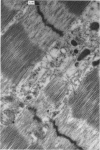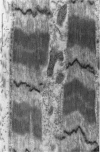Abstract
1. The electrical and structural characteristics of `slow' muscle fibres of the frog were studied in normal and denervated muscles, and in muscles undergoing re-innervation by a mixed nerve containing large and small motor axons.
2. In agreement with previous studies, slow fibres in normally innervated muscles were incapable of producing action potentials.
3. Approximately 2 weeks after the sciatic nerve was transected or crushed, slow muscle fibres acquired the ability to generate action potentials. These fibres were positively identified as belonging to the slow type, because their passive-electrical and ultrastructural characteristics remained essentially unchanged after the operations.
4. The action potential mechanism induced in slow fibres is sodium-dependent, and is blocked by tetrodotoxin.
5. After long-term re-innervation by a mixed nerve, slow fibres lose their acquired ability to generate action potentials, presumably because small motor axons re-establish connexion with the fibres.
6. It is concluded that the action potential mechanism of slow muscle fibres is under neural control, and is normally suppressed by small motor axons.
Full text
PDF
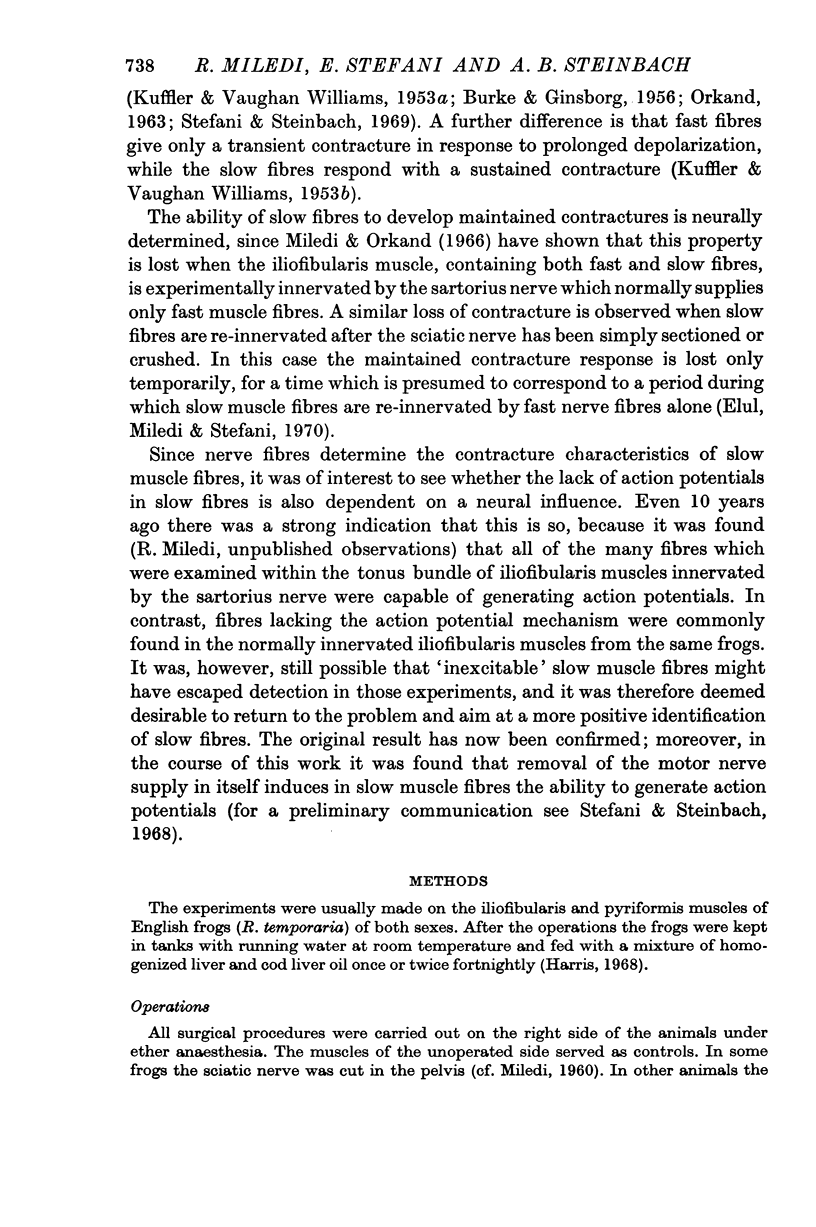
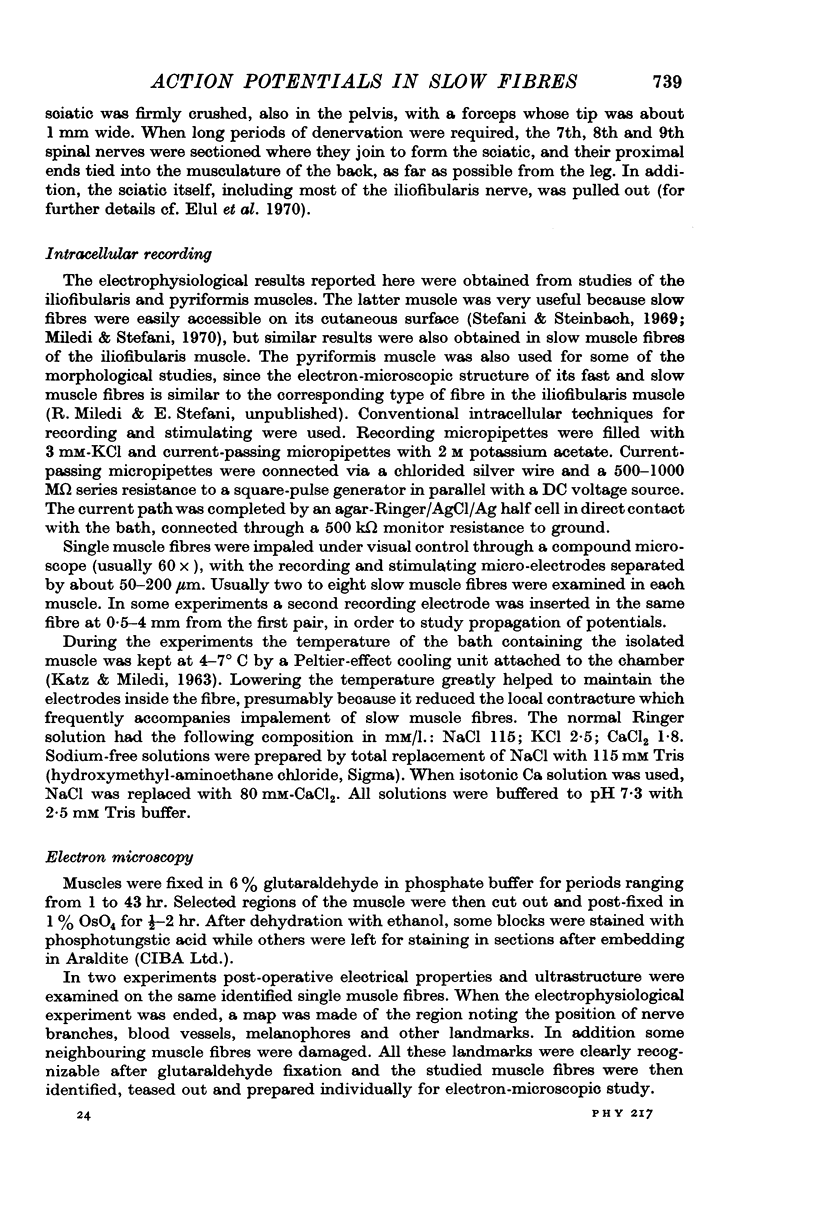
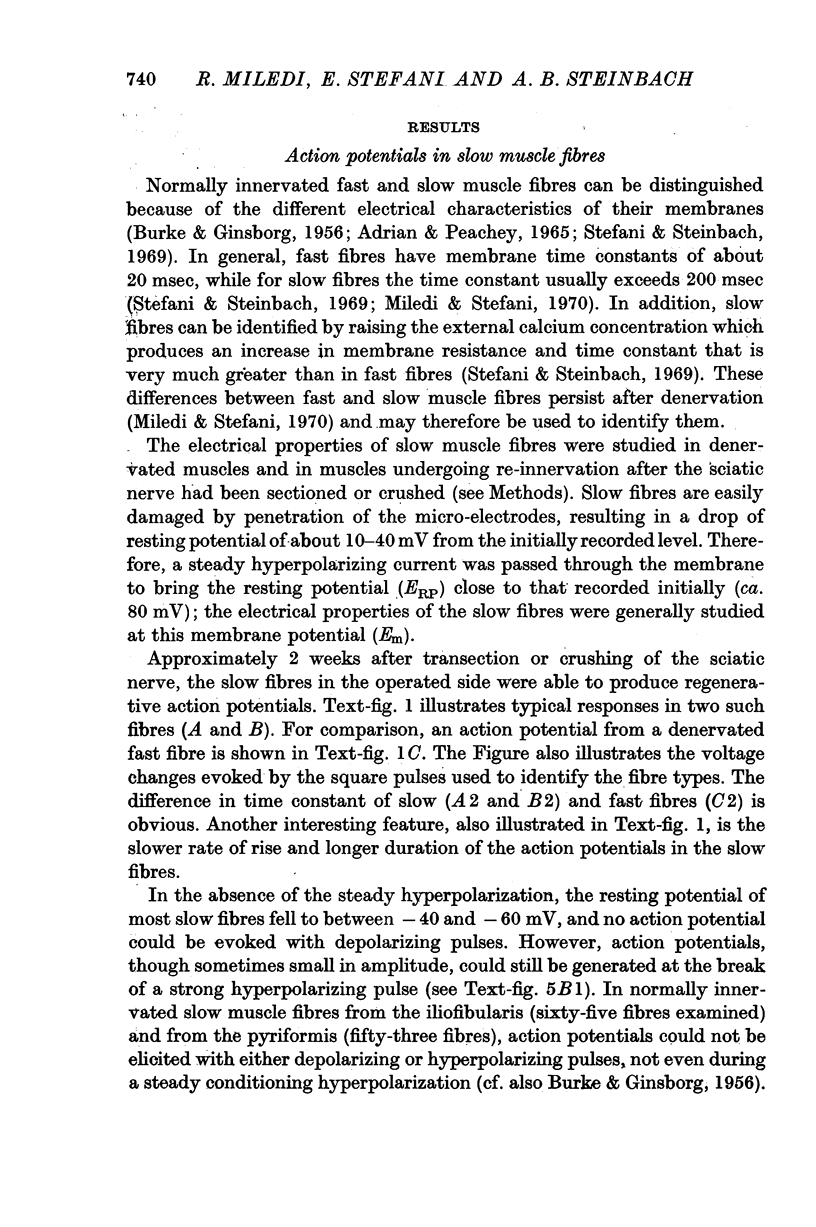

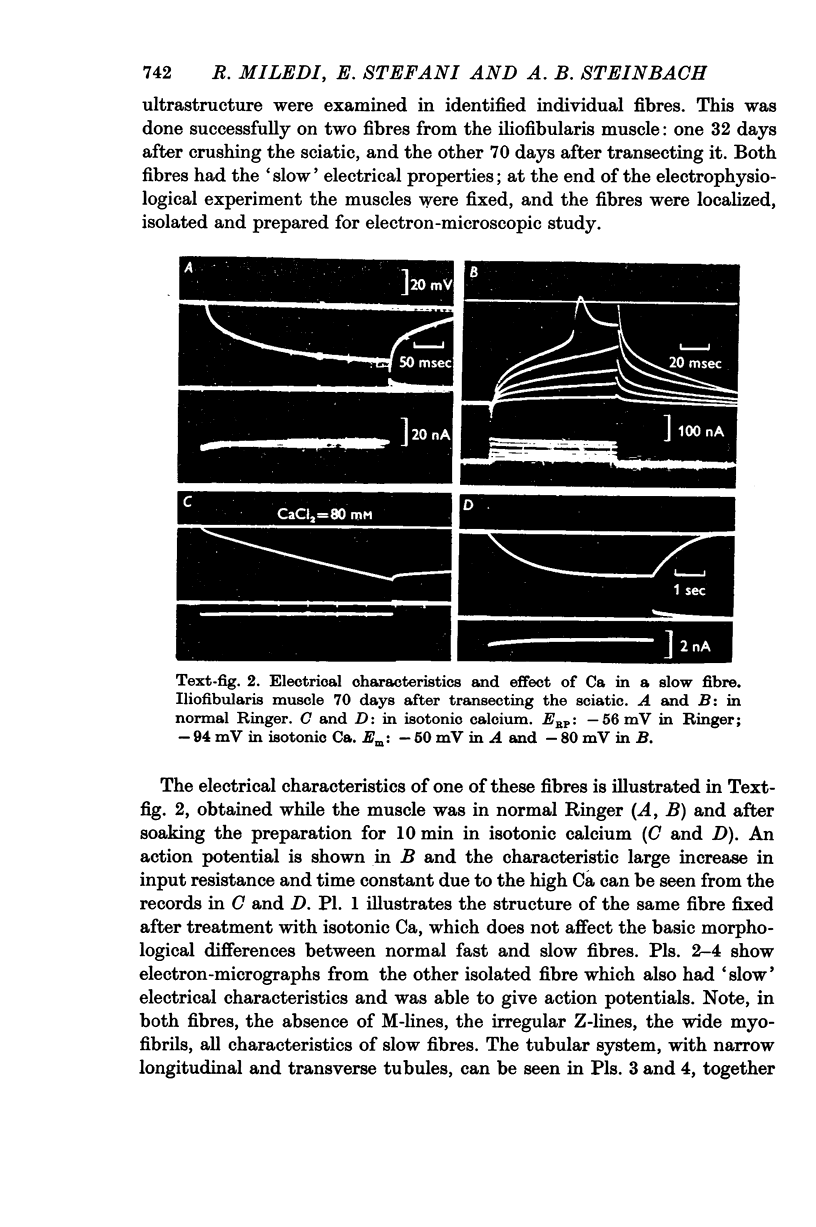
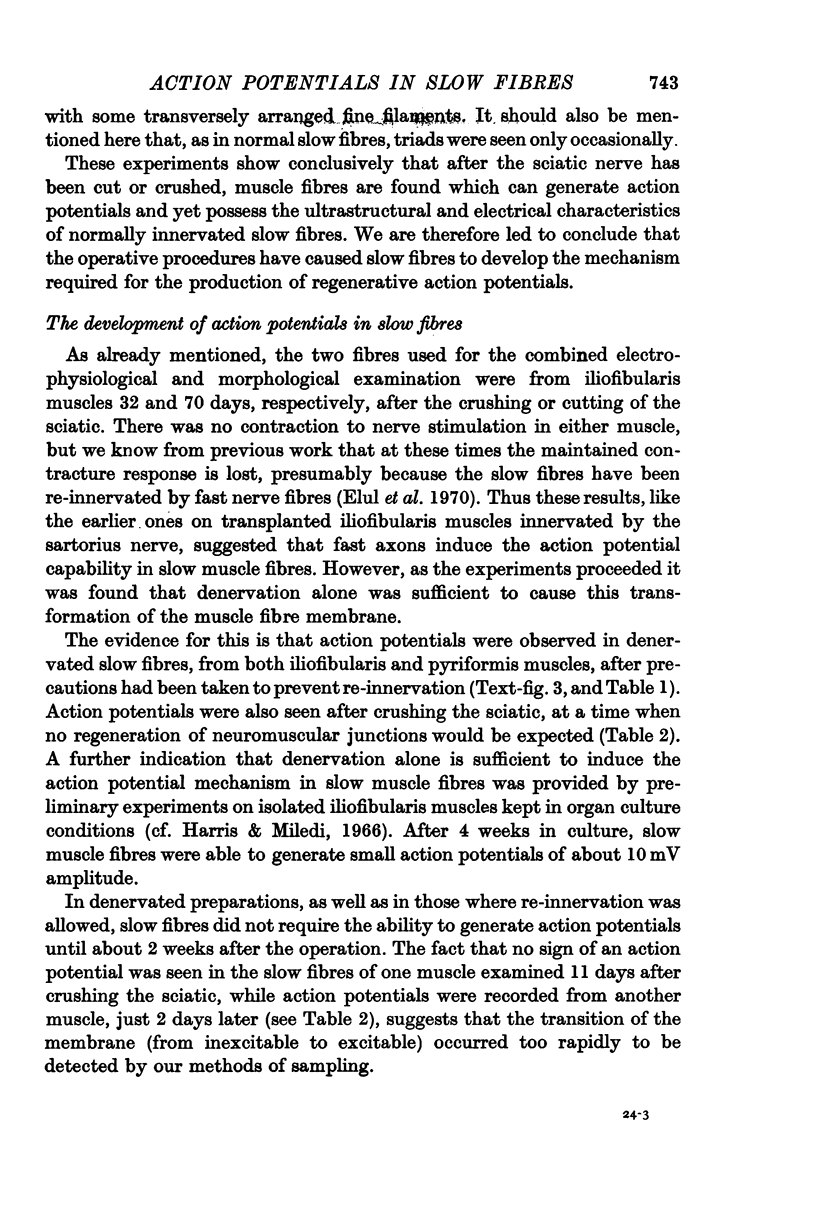
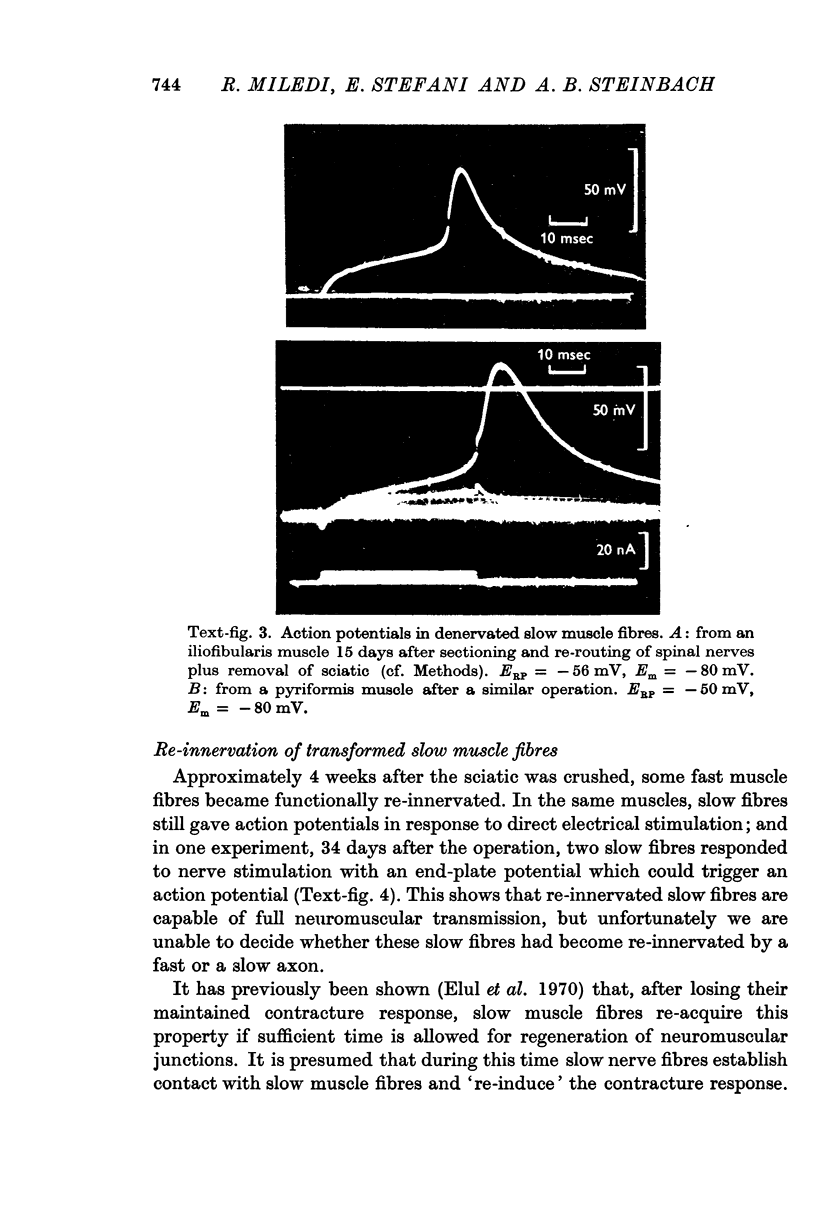

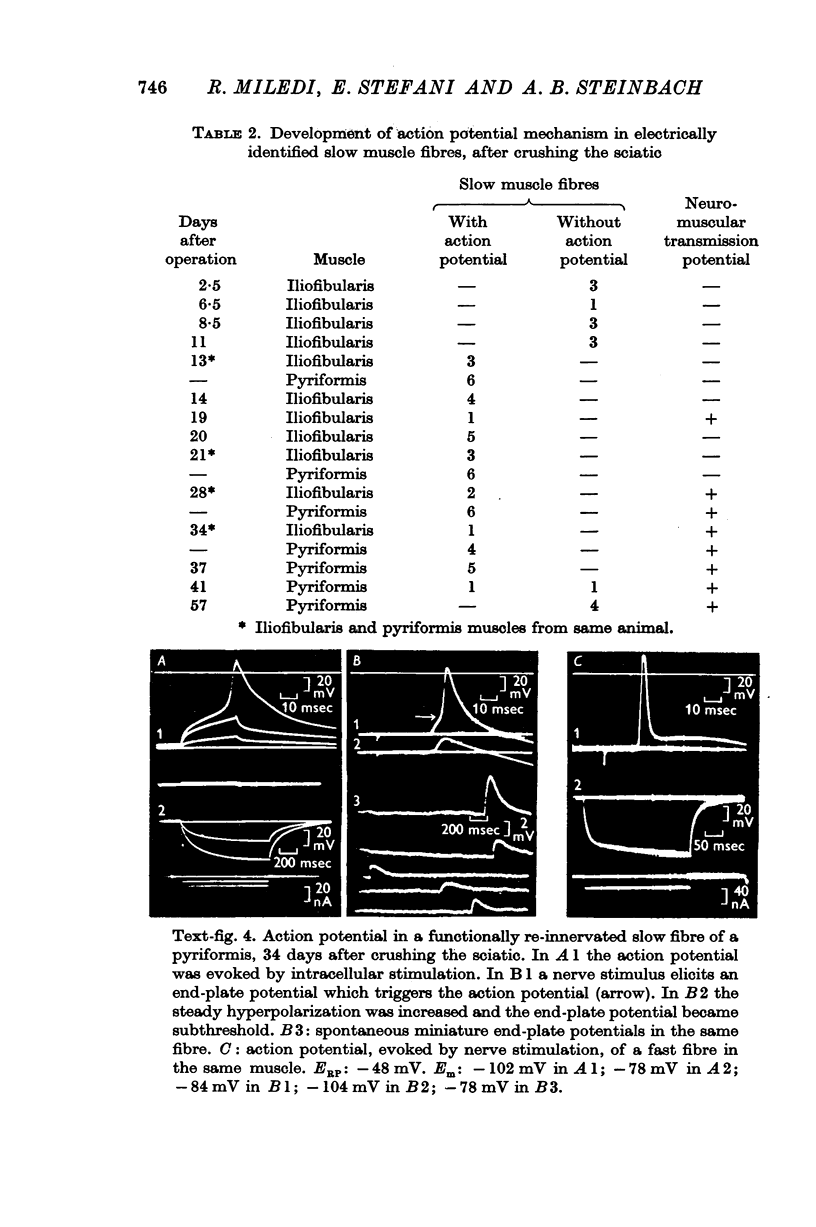
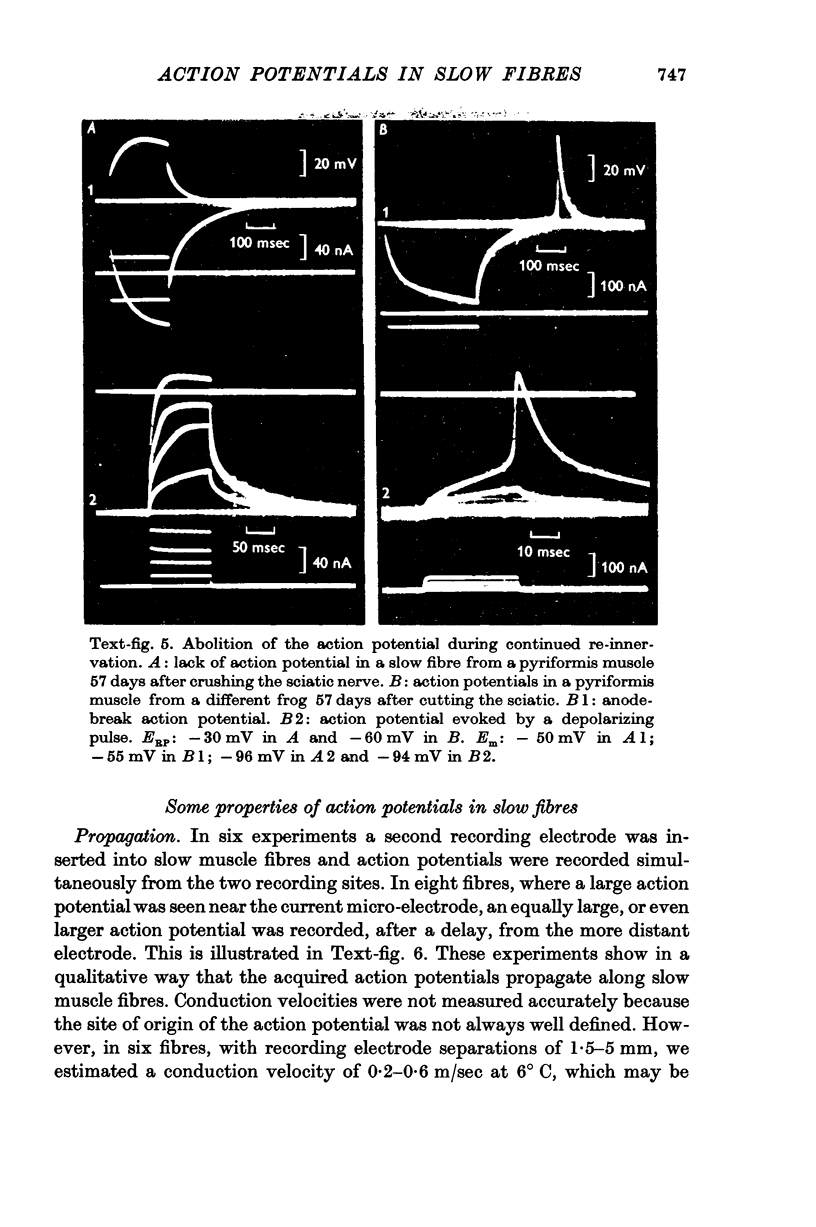
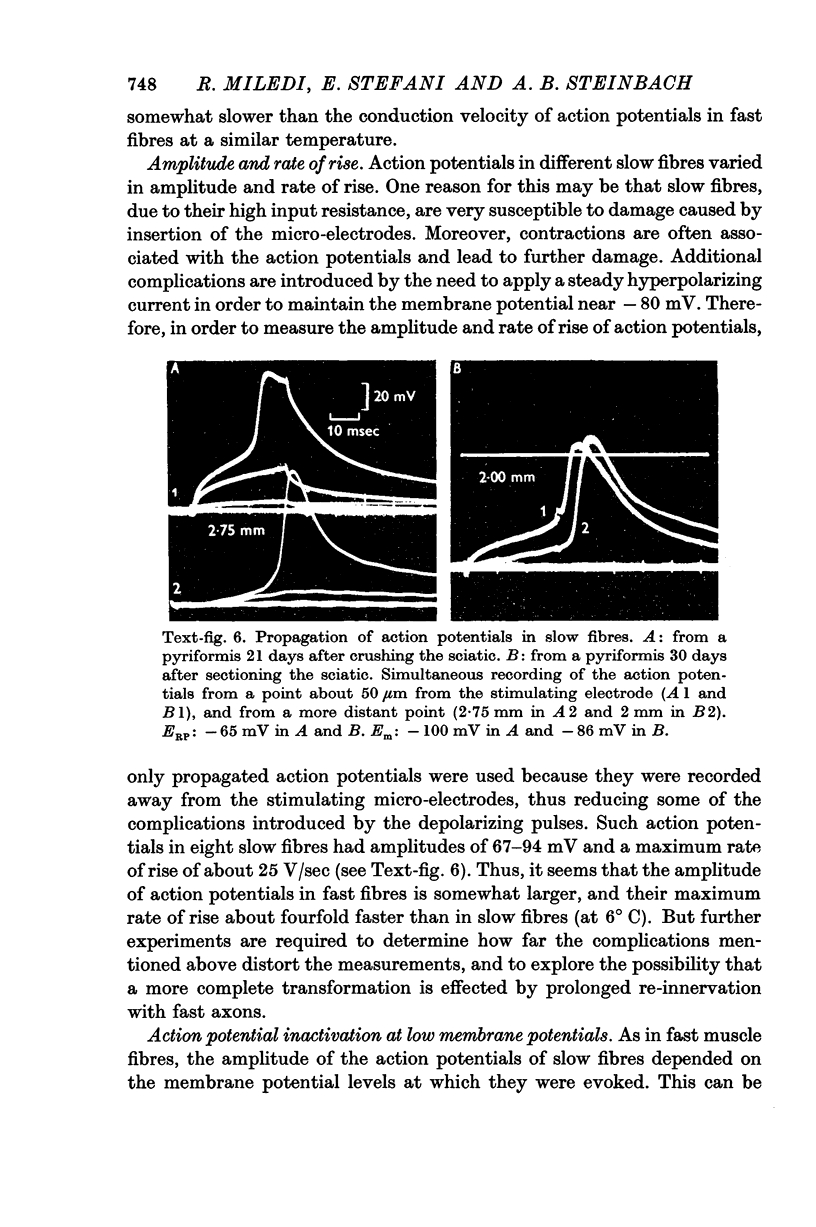
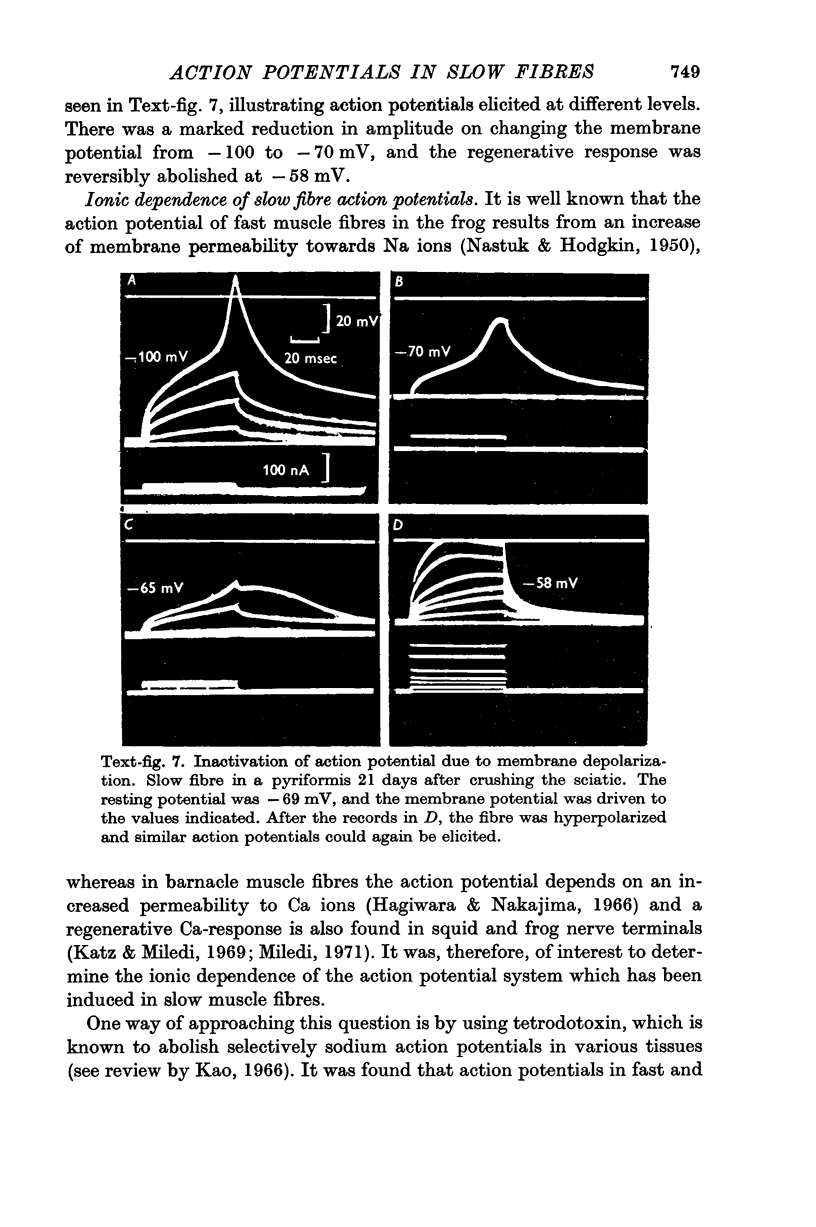
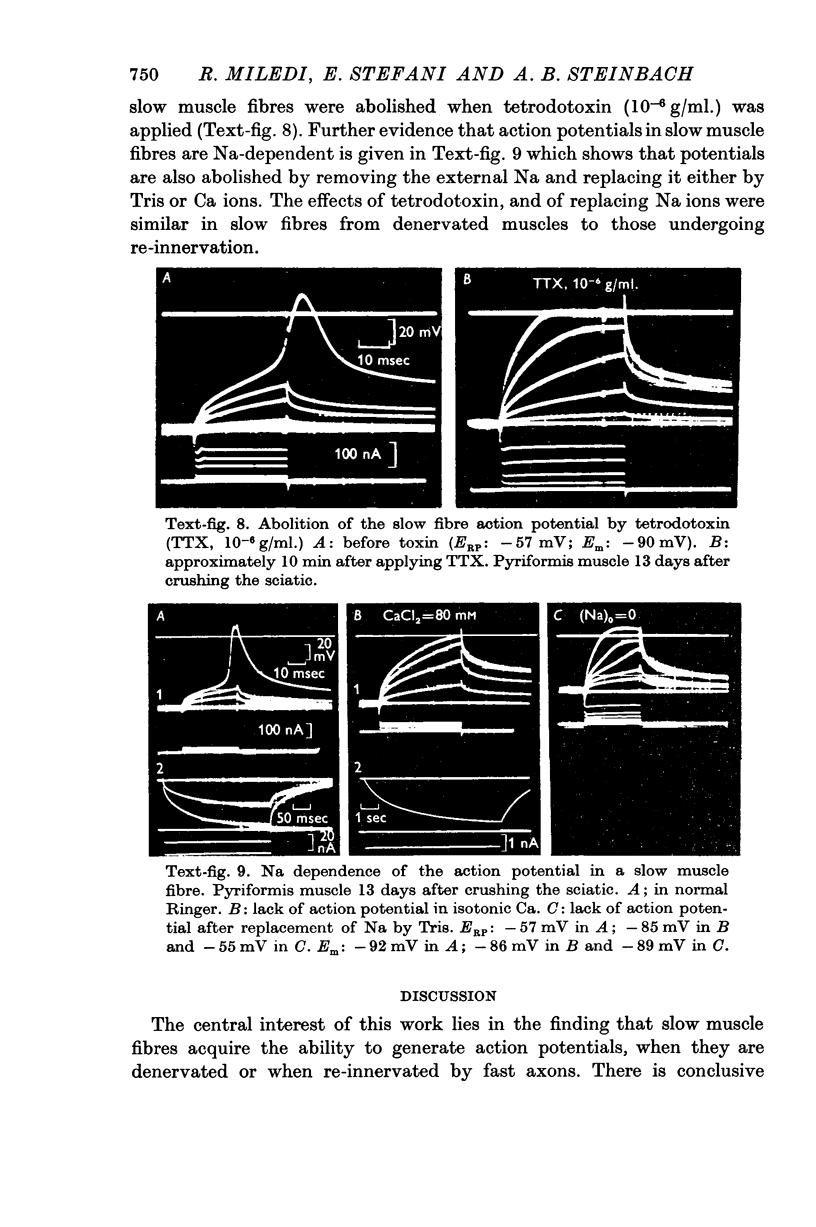

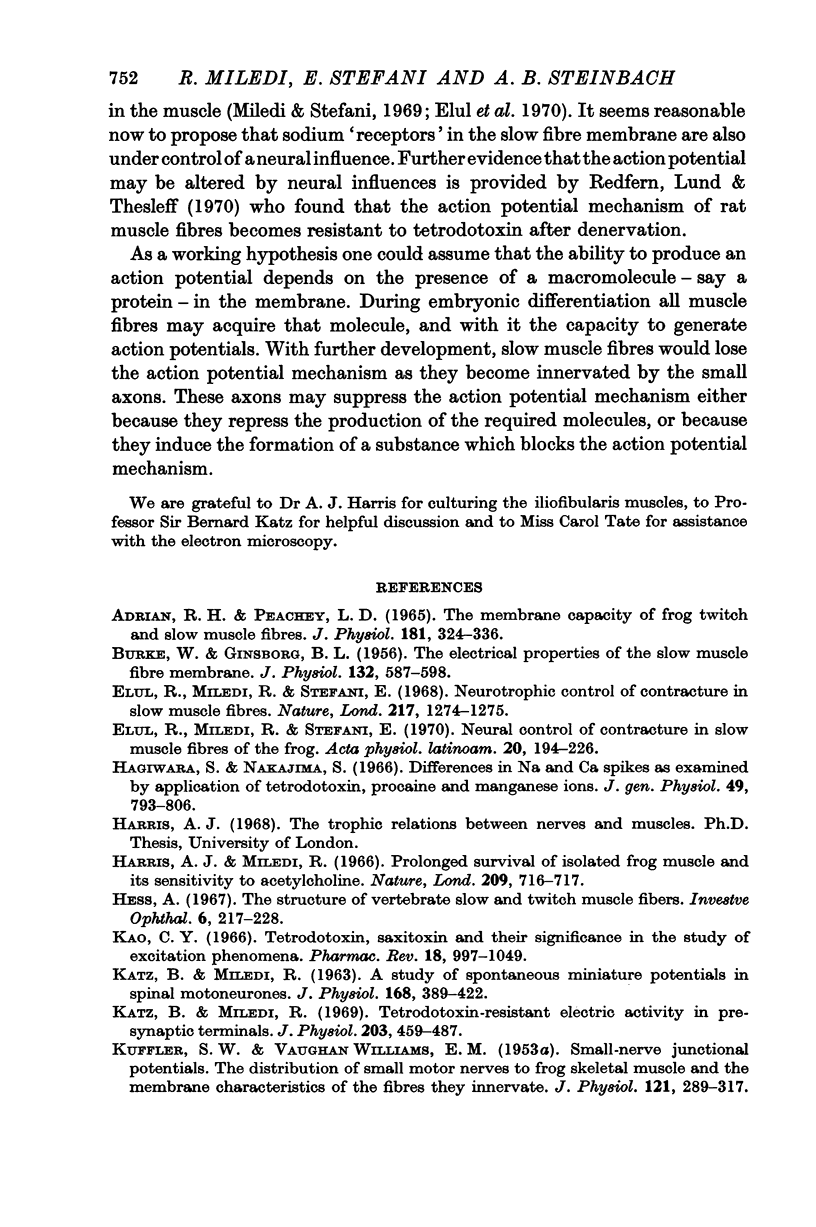
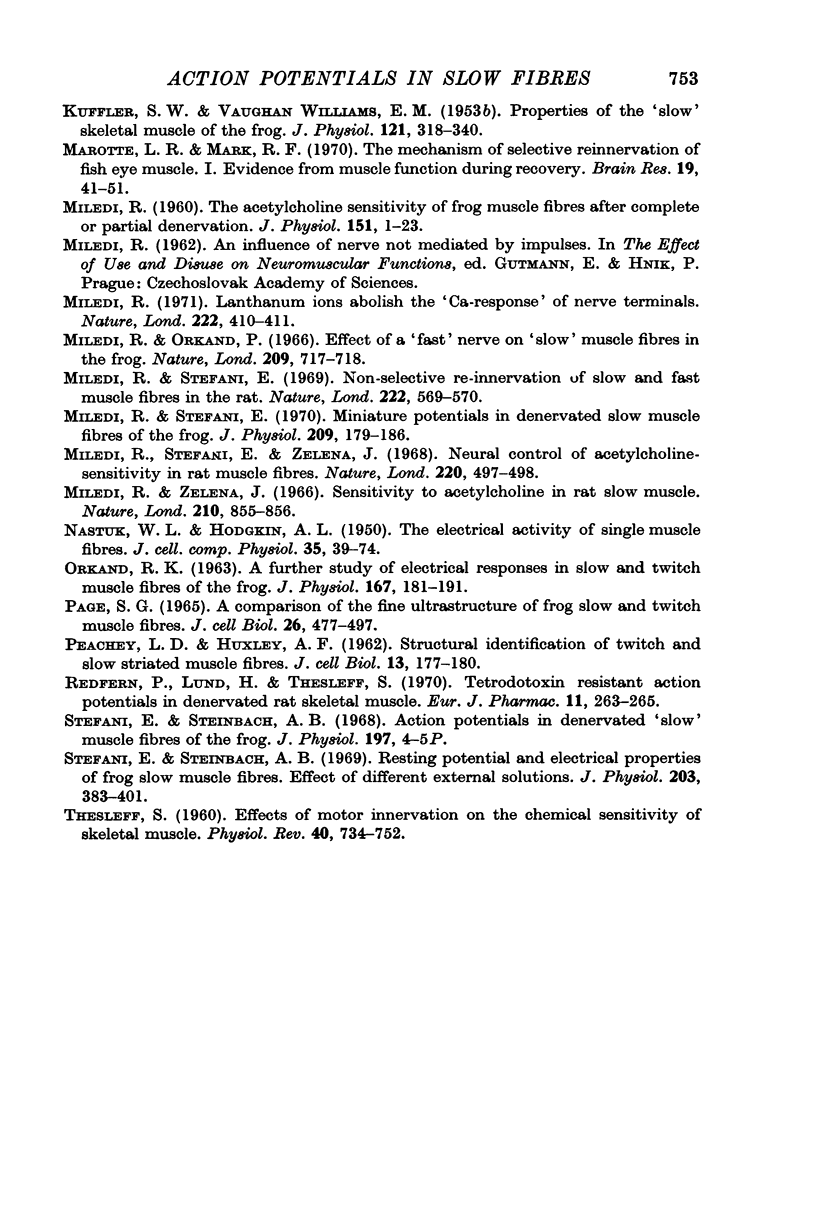
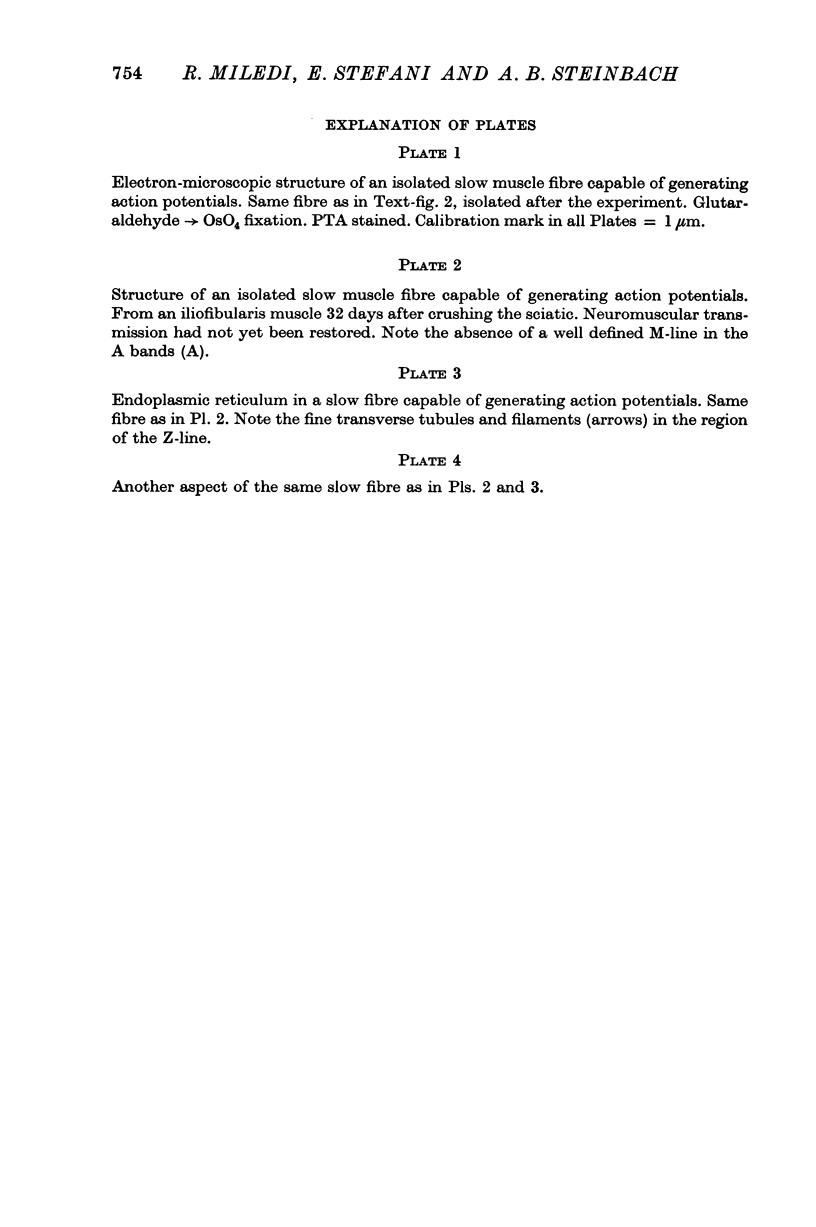




Images in this article
Selected References
These references are in PubMed. This may not be the complete list of references from this article.
- Adrian R. H., Peachey L. D. The membrane capacity of frog twitch and slow muscle fibres. J Physiol. 1965 Nov;181(2):324–336. doi: 10.1113/jphysiol.1965.sp007764. [DOI] [PMC free article] [PubMed] [Google Scholar]
- BURKE W., GINSBORG B. L. The electrical properties of the slow muscle fibre membrane. J Physiol. 1956 Jun 28;132(3):586–598. doi: 10.1113/jphysiol.1956.sp005551. [DOI] [PMC free article] [PubMed] [Google Scholar]
- Elul R., Miledi R., Stefani E. Neural control of contracture in slow muscle fibres of the frog. Acta Physiol Lat Am. 1970;20(3):194–226. [PubMed] [Google Scholar]
- Elul R., Miledi R., Stefani E. Neurotrophic control of contracture in slow muscle fibres. Nature. 1968 Mar 30;217(5135):1274–1275. doi: 10.1038/2171274a0. [DOI] [PubMed] [Google Scholar]
- Hagiwara S., Nakajima S. Differences in Na and Ca spikes as examined by application of tetrodotoxin, procaine, and manganese ions. J Gen Physiol. 1966 Mar;49(4):793–806. doi: 10.1085/jgp.49.4.793. [DOI] [PMC free article] [PubMed] [Google Scholar]
- Harris A. J., Miledi R. Prolonged survival of isolated frog muscle and its sensitivity to acetylcholine. Nature. 1966 Feb 12;209(5024):716–717. doi: 10.1038/209716a0. [DOI] [PubMed] [Google Scholar]
- Hess A. The structure of vertebrate slow and twitch muscle fibers. Invest Ophthalmol. 1967 Jun;6(3):217–228. [PubMed] [Google Scholar]
- KATZ B., MILEDI R. A STUDY OF SPONTANEOUS MINIATURE POTENTIALS IN SPINAL MOTONEURONES. J Physiol. 1963 Sep;168:389–422. doi: 10.1113/jphysiol.1963.sp007199. [DOI] [PMC free article] [PubMed] [Google Scholar]
- KUFFLER S. W., VAUGHAN WILLIAMS E. M. Properties of the 'slow' skeletal muscles fibres of the frog. J Physiol. 1953 Aug;121(2):318–340. doi: 10.1113/jphysiol.1953.sp004949. [DOI] [PMC free article] [PubMed] [Google Scholar]
- KUFFLER S. W., VAUGHAN WILLIAMS E. M. Small-nerve junctional potentials; the distribution of small motor nerves to frog skeletal muscle, and the membrane characteristics of the fibres they innervate. J Physiol. 1953 Aug;121(2):289–317. doi: 10.1113/jphysiol.1953.sp004948. [DOI] [PMC free article] [PubMed] [Google Scholar]
- Kao C. Y. Tetrodotoxin, saxitoxin and their significance in the study of excitation phenomena. Pharmacol Rev. 1966 Jun;18(2):997–1049. [PubMed] [Google Scholar]
- Katz B., Miledi R. Tetrodotoxin-resistant electric activity in presynaptic terminals. J Physiol. 1969 Aug;203(2):459–487. doi: 10.1113/jphysiol.1969.sp008875. [DOI] [PMC free article] [PubMed] [Google Scholar]
- MILEDI R. The acetylcholine sensitivity of frog muscle fibres after complete or partial devervation. J Physiol. 1960 Apr;151:1–23. [PMC free article] [PubMed] [Google Scholar]
- Marotte L. R., Mark R. F. The mechanism of selective reinnervation of fish eye muscle. I. Evidence from muscle function during recovery. Brain Res. 1970 Apr 1;19(1):41–51. doi: 10.1016/0006-8993(70)90235-0. [DOI] [PubMed] [Google Scholar]
- Miledi R. Lanthanum ions abolish the "calcium response" of nerve terminals. Nature. 1971 Feb 5;229(5284):410–411. doi: 10.1038/229410a0. [DOI] [PubMed] [Google Scholar]
- Miledi R., Orkand P. Effect of a "fast" nerve on "slow" muscle fibres in the frog. Nature. 1966 Feb 12;209(5024):717–718. doi: 10.1038/209717a0. [DOI] [PubMed] [Google Scholar]
- Miledi R., Stefani E. Miniature potentials in denervated slow muscle fibres of the frog. J Physiol. 1970 Jul;209(1):179–186. doi: 10.1113/jphysiol.1970.sp009161. [DOI] [PMC free article] [PubMed] [Google Scholar]
- Miledi R., Stefani E. Non-selective re-innervation of slow and fast muscle fibres in the rat. Nature. 1969 May 10;222(5193):569–571. doi: 10.1038/222569a0. [DOI] [PubMed] [Google Scholar]
- Miledi R., Stefani E., Zelená J. Neural control of acetylcholine-sensitivity in rat muscle fibers. Nature. 1968 Nov 2;220(5166):497–498. doi: 10.1038/220497a0. [DOI] [PubMed] [Google Scholar]
- Miledi R., Zelená J. Sensitivity to acetylcholine in rat slow muscle. Nature. 1966 May 21;210(5038):855–856. doi: 10.1038/210855a0. [DOI] [PubMed] [Google Scholar]
- ORKAND R. K. A further study of electrical responses in slow and twitch muscle fibres of the frog. J Physiol. 1963 Jun;167:181–191. doi: 10.1113/jphysiol.1963.sp007140. [DOI] [PMC free article] [PubMed] [Google Scholar]
- PEACHEY L. D., HUXLEY A. F. Structural identification of twitch and slow striated muscle fibers of the frog. J Cell Biol. 1962 Apr;13:177–180. doi: 10.1083/jcb.13.1.177. [DOI] [PMC free article] [PubMed] [Google Scholar]
- Page S. G. A comparison of the fine structures of frog slow and twitch muscle fibers. J Cell Biol. 1965 Aug;26(2):477–497. doi: 10.1083/jcb.26.2.477. [DOI] [PMC free article] [PubMed] [Google Scholar]
- Redfern P., Lundh H., Thesleff S. Tetrodotoxin resistant action potentials in denervated rat skeletal muscle. Eur J Pharmacol. 1970 Jul 15;11(2):263–265. doi: 10.1016/0014-2999(70)90056-7. [DOI] [PubMed] [Google Scholar]
- Stefani E., Steinbach A. B. Action potentials in denervated "slow" muscle fibres of the frog. J Physiol. 1968 Jul;197(1):4P–5P. [PubMed] [Google Scholar]
- Stefani E., Steinbach A. B. Resting potential and electrical properties of frog slow muscle fibres. Effect of different external solutions. J Physiol. 1969 Aug;203(2):383–401. doi: 10.1113/jphysiol.1969.sp008869. [DOI] [PMC free article] [PubMed] [Google Scholar]
- THESLEFF S. Effects of motor innervation on the chemical sensitivity of skeletal muscle. Physiol Rev. 1960 Oct;40:734–752. doi: 10.1152/physrev.1960.40.4.734. [DOI] [PubMed] [Google Scholar]



